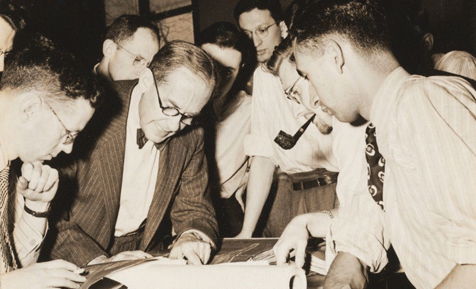
by Andrew Vermouth
The Integrative Design process is UpDIG’s guiding philosophy in our approach to projects and product development. And, as it’s essentially “in our DNA” as a company, we put it directly into our name. “UpDIG” can be considered an acronym for “Urban and Peri-urban Design Integration Group”… even if we think just “UpDIG” seems to make the most sense from the ground level view of things, which is where we like to be. So, what exactly is Integrative Design?
To put it simply, Integrative Design is a way to bring people from many areas of expertise together to solve a problem quickly, and with minimal errors.
Here’s a traditional approach: a company or other entity decides they need a new “product,” so they call on a set of “experts” to guide the development process. The experts ask some questions, bring assumptions, and then enter a design phase. After some weeks, they present a draft idea to their client, who reviews the idea, and inevitably realizes they forgot to share key information with their experts. The experts take this new information, refine the draft, and after several more revisions the client is happy with the final concept. The experts produce the product, the client releases the product to their users, but… the users don’t readily adopt it. The product lacks a key feature. So, back to the drawing board.
In an Integrative Design approach, everyone—the client, experts from various backgrounds, and sometimes the end user—starts with as close to zero assumptions as possible, conducts extensive contextual research, and comes together to design the product. Up to 70 percent of a team’s time might be spent in this research and design phase, questioning all angles of the proposed product, and even whether a user needs it. Once the design phase is complete, we can then “rapid prototype” a product, and test and improve upon the solution quickly in a real-world setting.
Integrative Design came about originally as way to improve upon the inefficiencies in the “green” building design process as it crosses the complexities of the built environment. Since UpDIG focuses on similarly intertwined issue areas—water, energy, waste management, food production, and market linkages—within disparate contexts, we have adopted the approach to go beyond the fashionable… Design Thinking, Human-Centered Design, Lean Enterprise/Methodology, Agile Development, etc. approaches to include the environment of each context. In our view, all of these methodologies are cousins to each other in that they share grandparents, and that the customer (or user) is at at least one center of the design effort.
I became interested in the concept of user-centered design in the early 90s as an apprentice designer at Arrowstreet Inc. in Cambridge. Arrowstreet had been founded in the early 60s by a bunch of Harvard and MIT designers who had been exposed to Harvard’s importation of the Bauhaus designer, Walter Gropius, among others. Down the street, The Architects Collaborative (TAC)—Gropius’s firm—was still in business, and Ben Thompson—another TAC founder—was still active at his own shop up the block in Harvard Square where he had broken the retail design mold with the Design Research building in 1969. Even as the “style council” (one or two people who end up reading this may know who I’m talking about) down another street at Harvard GSD were actively trashing the previous four decades of thought in the name of postmodernism, practicing designers were still using the design methodologies they’d picked up in school or from their mentors at these working shops. It was an interesting time of creative tension that deserves its own essay, so I digress.
Arrowstreet from the 60s through the early 90s had two sides to its business—straight-ahead architectural design, and a nonprofit arm called Environmental Design Group (EDG). EDG was active in urban planning of the 60s and 70s using a form of design we were calling “User-defined Design.” Sound familiar? It was more than just “user-centered,” it necessarily involved the participation of the user and thus was considered a branch of… wait for it… “Participatory Design.”
But this is why UpDIG is different: where others are focused on thinking “outside the box,” we are asking, “What is a box?” or “Who really is the user?” And, that’s what we call “zero assumptions.”
At UpDIG, although users are important, we never assume that the user is by definition central to the way a product or service should be designed. Maybe the delivery system is central. Maybe the environmental or cultural context is central. Maybe they are all central. When we designed UpDIG Market Carts, the user was only one part of the larger problem we were trying to solve. The Integrative Design approach allows us to uncover what is essential, what is important, and what can fall by the wayside as we look for the best solution.
Our Integrative Design approach allows for well-researched progress as we focus less on perfection. We choose to listen with as much humility as possible, and move together toward solutions.



